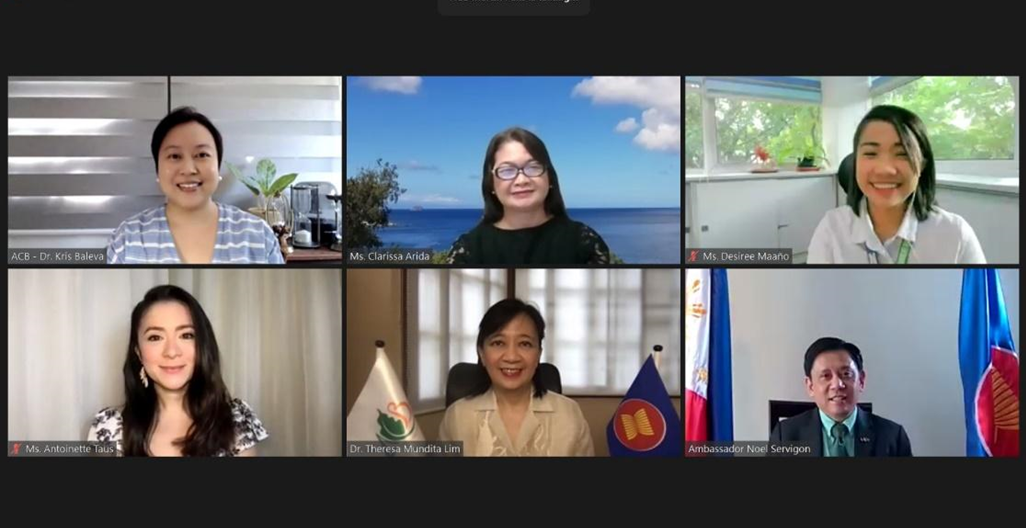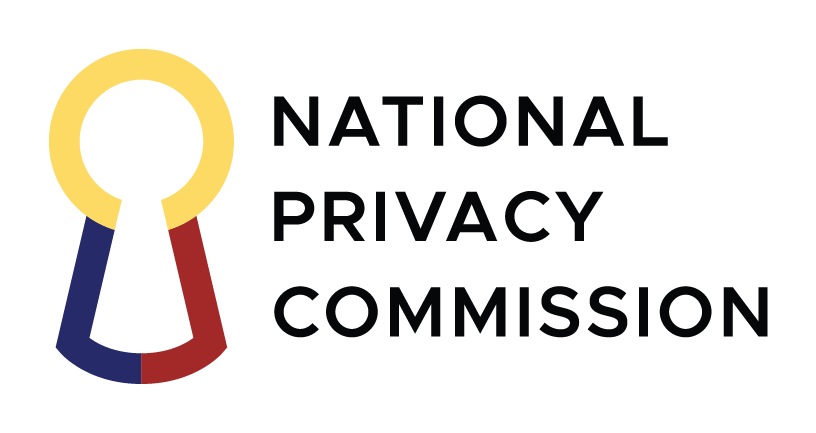JPM-Press Release-2021-36

(Top row, L-R) Dr. Mary Kristerie A. Baleva, External Relations and Policy Specialist of the ASEAN Centre for Biodiversity (ACB); Ms. Clarissa Arida, ACB Director for Programme Development and Implementation; Ms. Desiree Maaño, Coastal and Marine Ecosystems Management Section Chief of the Biodiversity Management Bureau;
(Second row, L-R) Ms. Antoinette Taus, Founder of Communities Organized for Resource Allocation (CORA) and webinar host; Dr. Theresa Mundita Lim, ACB Executive Director; and Ambassador Noel Servigon, Permanent Representative of the Philippines to the ASEAN.
24 September 2021—The Permanent Mission of the Philippines to ASEAN and the ASEAN Centre for Biodiversity held a webinar entitled, “Marine Biodiversity Conservation in ASEAN: Current State and Ways Forward” on 24 September 2021.
The webinar was conducted in line with Philippines’ Presidential Proclamation No. 316, declaring September as Maritime and Archipelagic Nation Awareness Month or MANA Mo (your inheritance). It highlighted the ASEAN region’s rich and diverse marine resources which serve as a unifying force that compel stronger regional cooperation among ASEAN Member States.
In his opening remarks, Ambassador Noel Servigon, Permanent Representative of the Philippines to the ASEAN, underscored that the Philippines shares with its ASEAN neighbors the most fertile part of the Coral Triangle which is recognized as the heart of the planet’s marine biodiversity. He drew attention to the fact that the seas in the region are also among the world’s most vulnerable, necessitating collective action among ASEAN Member States and its partners.
“Sadly, the ASEAN region’s marine ecosystem is one of the world’s most threatened in terms of coastal marine resources degradation. This has a profound impact on the planet and its inhabitants, inevitably threatening food security, local tourism, and global warming mitigation,” Ambassador Servigon said.
ACB Executive Director Dr. Theresa Mundita Lim noted that the region’s marine ecosystems not only provide for the ASEAN citizen’s socio-economic well-being and embody the ecological connectivity within and beyond the ASEAN, but also protect against the devastating impacts of climate change.
“The seas connecting the ASEAN encourage the Member States to unite and forge stronger linkages in addressing the climate crisis and the pandemic we are currently in. Thus, the protection and sustainable management of our biodiversity––our common natural heritage, serve as our compass as we set sail towards recovery,” said Dr. Lim. “Healthy mangroves, tidal flats, seagrass beds, and coral reefs act as natural barriers against strong winds and storm surges and contribute to our resilience to rising temperatures.”
ACB Director for Programme Development and Implementation Clarissa Arida discussed the networks of Marine Protected Areas in the region. She shared that marine ecoregions, large marine ecosystems, and open oceans are mostly transboundary areas, emphasizing that these systems are often interlinked by a complex web of environmental, political, economic and security issues.
“Threats to these shared resources have cumulative and synergistic environmental impacts and underscore the need for integrated and multisectoral management approaches,” Director Arida said. She cited marine debris pollution as an example of a transboundary issue that requires integrated regional cooperation.
“Trash is a known threat to marine protected areas as these can harm important species that inhabit the park, smother coral reefs, and destroy scenic underwater features that attract eco-tourists,” Director Arida said noting the commitment of ASEAN Member States to tackle this problem through the adoption of the Bangkok Declaration on Combating Marine Debris in the ASEAN Region and the ASEAN Framework of Action on Marine Debris.
Ms. Desiree Maaño, Coastal and Marine Ecosystems Management Section Chief of the Philippines’ Biodiversity Management Bureau, presented to the webinar ASEAN’s approaches and strategies in building constituencies to sustain conservation efforts.
According to her, common threats to the marine biodiversity are illegal wildlife trade as well as illegal, unreported, and unregulated fishing by locals. “We have shared fish stock, common concerns on maritime trade and security, and even threats. Thus, we also have a shared responsibility among Member States to protect our oceans,” she emphasized.
Antoinette Taus, founder of Communities Organized for Resource Allocation (CORA) and one of the voices of the ACB’s #WeAreASEANBiodiversity campaign, hosted the event that drew over two hundred participants from various ASEAN Member States.
The recorded live stream of the webinar may be accessed on the Facebook pages of the Permanent Mission of the Philippines to ASEAN and the ACB. END.

